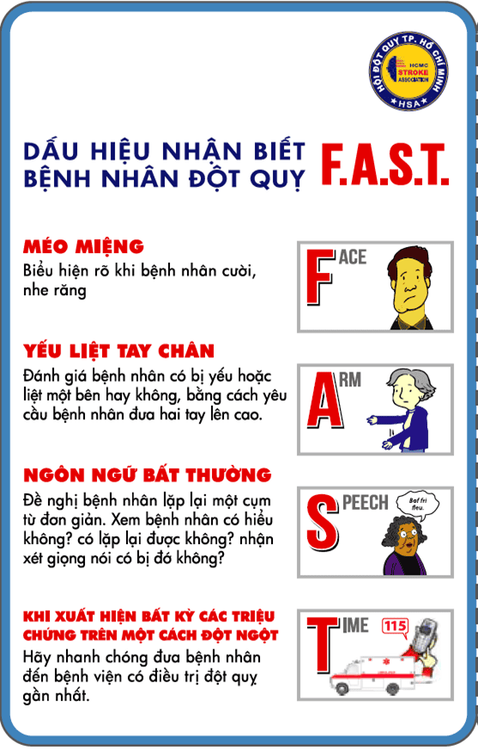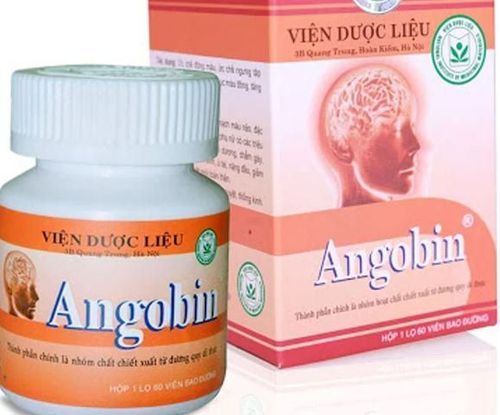This is an automatically translated article.
The article was professionally consulted by a neurosurgeon, Department of General Surgery, Vinmec Central Park International General Hospital.Stroke is the leading cause of disability and death worldwide, it is a medical emergency and requires prompt diagnosis and treatment. Therefore, early recognition of stroke symptoms helps to control and treat the disease effectively.
1. What is a stroke?
A stroke occurs when the brain doesn't get enough oxygen. This causes brain cells to die. A stroke can cause problems with memory, speech, and movement. People can die from a stroke. The longer the brain is deprived of oxygen, the more damage it does.2. Stroke classification
2.1 Ischemic stroke Caused by a blockage in an artery, accounts for about 85% of all strokes. Despite extensive reviews, many strokes of this type remain unexplained. Fortunately, preventive therapies are effective for all types of ischemic stroke.2.2 Thrombotic stroke A blood clot (thrombus) forms in an artery in the neck or brain. These arteries can have fatty deposits, called plaques.
2.3 Embolic stroke Blocked by blood clots that form somewhere in the body (usually the heart) and travel to the brain. A common source is usually an abnormal rhythm in the upper two chambers of the heart (atrial fibrillation), which can cause blood clots to form.
2.4 Hemorrhagic stroke Hemorrhagic means bleeding. This type of stroke is caused by a leak or crack in a brain artery or on the surface of the brain. These cracks can be caused by an aneurysm (a thin, weak area on an artery wall) or by a malformation of the cerebrovascular system. Bleeding can occur within the brain, or in the space between the brain and its protective outer layer. About 15% of strokes are hemorrhagic.
Transient ischemic attack (TIA): Often called a mini-stroke, TIAs are actually short periods of symptoms of a stroke, usually lasting only a few minutes. TIAs are caused by a temporary decrease in blood supply to part of the brain, and do not cause noticeable long-term effects. But a transient ischemic attack is considered a warning sign of a higher stroke risk, and should be evaluated by a doctor right away.

Dấu hiệu nhận biết đột quỵ
3. Recognize the signs of a stroke
Stroke symptoms are easy to see because they happen quickly. Signs of a stroke:Sudden paralysis or weakness in the face, arm or leg, especially on only one side. If you can't raise your arms above your head at the same time, or if you can't smile normally, you may be having a stroke. Sudden confusion, difficulty speaking or understanding. If you can't repeat a simple sentence, you may be having a stroke. Sudden blurred vision in one or both eyes. Unsteady walking or sudden loss of balance and coordination. Sudden severe headache. For people who have ever had a stroke, it is necessary to pay attention to the above signs, to be more careful. Family members need to be closely monitored because they are prone to having a stroke again. It is necessary to periodically monitor health and take prescribed medications, when seeing abnormalities in the body, it is necessary to consult a doctor immediately.
Currently, Magnetic Resonance Imaging - MRI/MRA - is a "golden" tool for brain stroke screening. MRI is used to check the condition of most organs in the body, especially valuable in detailed imaging of the brain or spinal nerves. Due to the good resolution and contrast, MRI images allow to detect abnormalities hidden behind bone layers that are difficult to detect with other imaging methods. MRI can give more accurate results than other X-ray techniques (except DSA angiography) in diagnosing brain diseases, cardiovascular diseases, strokes,... Moreover, the process MRI scans do not cause side effects like X-rays or computed tomography (CT) scans.\
Vinmec International General Hospital currently owns a 3.0 Tesla MRI System, which is equipped with state-of-the-art equipment by GE. Healthcare (USA) with high image quality, allows comprehensive assessment, does not miss the injury but reduces the time taken to take pictures. Silent technology helps to reduce noise, create comfort and reduce stress for the client during the shooting process, resulting in better image quality and shorter imaging time. With the state-of-the-art MRI system With the application of modern methods of cerebral vascular intervention, a team of experienced and well-trained neurologists and imaging specialists, Vinmec is a prestigious address for stroke risk screening and screening. reliable goods.
In the past time; Vinmec has successfully treated many cases of stroke in a timely manner, leaving no sequelae: saving the life of a patient suffering from 2 consecutive strokes; Responding to foreign female tourists to escape the "death door" of a stroke ;...
Please dial HOTLINE for more information or register for an appointment HERE. Download MyVinmec app to make appointments faster and to manage your bookings easily.













